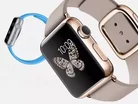Article
Technology
35 things you probably didn't know about the Apple Watch
By Glen White
May 16, 2020
undefined mins

Manufacturing Global unveils absolutely everything there is to know about the Apple Watch. Models The Apple Watch will be available in three models: the...
Manufacturing Global unveils absolutely everything there is to know about the Apple Watch.
Models
- The Apple Watch will be available in three models: the Apple Watch, Watch Sport and Watch Edition.
- All models will be sold in either 1.4-inch (38mm) or 1.7-inch (42mm) versions depending on which colour the owner chooses.
- The Apple Watch is made of stainless steel with a sapphire crystal Retina display and ceramic back.
- The Apple Watch Sport is made of 7000 Series Silver Aluminium with Ion-X Glass on a Retina display and composite back.
- The Apple Watch Edition has a similar build to the Apple Watch but comes in 18-Karat Rose Gold and Yellow Gold.
- Interchangeable straps include fluoroelastomer (rubber), leather, and stainless steel.
Prices
- The Apple Watch is made of stainless steel and prices range between $549 and $1048 for the 1.4-inch model and $599 and $1099 for the larger 1.7-inch version.
- The Watch Sport is made of 7000 Series Silver Aluminium and ranges from $349 to $399.
- The premium Edition has a similar build to the Apple Watch but comes in 18-Karat Rose Gold and Yellow Gold. Prices start at $10,000.
- All of the watches can be pre-ordered from 10 April and goes on sale on 24 April.
- In the UK, Sport starts at £299, the standard Watch starts at £479 and the Edition model will cost £8,000.
Gestures
- Following last year's unveiling, Apple admitted the Watch is unlike any device it has ever made.
- It said it has 'reinvented all-new ways to select navigate and input that are suited to a smaller device worn on the wrist'. The Watch is also said to be able to sense force adding 'a new dimension to the user interface'.
- Force Touch uses electrodes around the flexible display to distinguish between a light tap and a deep press, and trigger instant access to a range of contextually specific controls - such as an action menu in Messages, or a mode that lets you select different watch faces.
Digital Crown
- On mechanical watches, the crown has historically been used to set the time and date and to wind the mainspring. Apple has adapted this and its 'digital' crown can be used to magnify content on the small display.
- Rotating the digital crown replaces the typical pinching motion used on iPhones and iPads and allows wearers to zoom and scroll without obstructing the screen.
- Pressing the crown will also return wearers to the home screen.
Watch OS
- Apple has taken the iOS software on its phones and tablets and tweaked it to better suit the watch's power, display size and functions. It has also invented a new typeface to make the screen easier to read.
Sapphire display
- Apple Watches have a laminated Retina display made from a 'single crystal of sapphire.' While on the Sport collection the screen has the added protection of Ion-X glass.
Glances
- The Glances feature shows info users would like to see, similar to Google Now, and is accessed by swiping the screen up from the bottom.
- For instance, wearers can glimpse the weather forecast, check out what's next on their calendar, or find their location on a map. They can then swipe through different Glances, or tap on one to go directly to its corresponding app for more details.
- Music can also be controlled on an iPhone through the Apple Watch.
- On the back of the Watch's case is a sensor that uses infrared and visible-light LEDs and photodiodes to detect the wearer's heart rate
Vibration and notifications
- The Watch has a built-in is a 'taptic engine' that responds to a subtle vibrations users feel on their wrist for notifications.
- Any notification that appears on the connected phone will appear on the Watch.
- This is made from a linear actuator, or motor, inside the Apple Watch that produces haptic feedback. The wearer can then respond to these messages directly or swipe down to see the Notification Centre. This haptic feedback could also be used with Apple Maps, for example, to help people navigate. It will produce gentle vibrations to signal when to turn left or right.
- The Watch additionally understands questions in messages and offers pre-selected answers, and messages can be dictated to the iPhone.
- And this taptic engine means people can get someone's attention with a gentle tap or send their heartbeat remotely.
- There is no keyboard on the Watch, and messages can only be sent through dictation, or emoji.
- Siri is also built into the Apple Watch.
Heart rate sensor
- On the back of the Watch's case, a ceramic cover with sapphire lenses sits above a sensor that uses infrared and visible-light LEDs and photodiodes to detect the wearer's heart rate.
- Apple Watch uses this sensor, along with an accelerometer and the GPS and Wi‑Fi in a connected iPhone, to measure physical movement such as steps, distance and calories.
Inductive charging
- The Watch uses Apple's MagSafe technology with inductive charging.
- This means it can be charged wirelessly by placing a connector near the back of the watch where magnets cause it to snap into place automatically. MagSafe is the name of the connector Apple uses with its MacBook range.
Battery life
- The watch has an average battery life of 18 hours
Share
